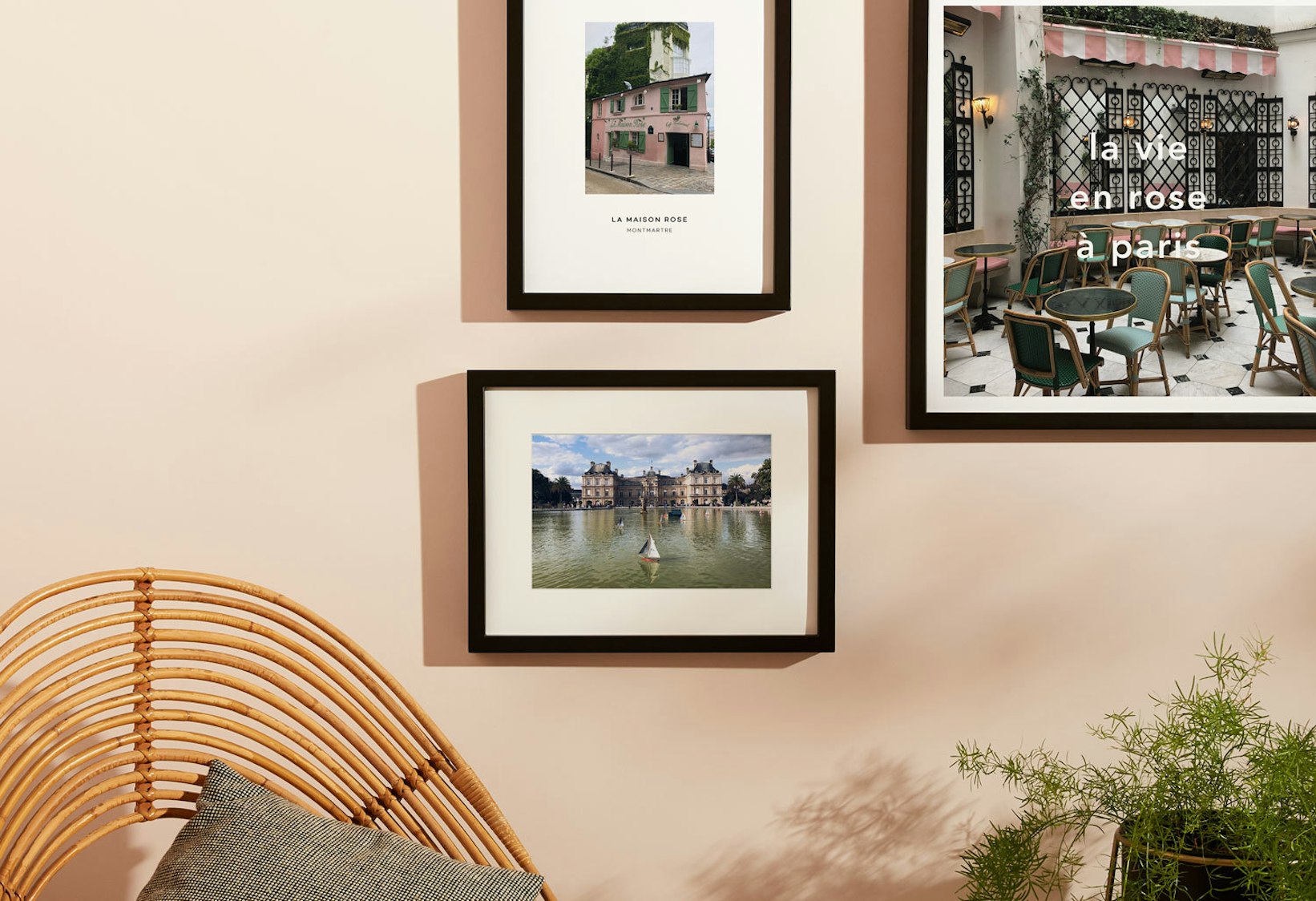Picture wall ideas
How to create your own gallery wall
Snap it, frame it and repeat. That’s the gist of a gallery wall where you group together a healthy mix of photos and pieces of art all on the one expanse of brick, paint or wallpaper. But if only it were as simple as scooping up your snaps and throwing them at your wall for them to hang themselves in that devil-may-care picture wall fashion. No, this is a home decor look that requires careful pondering, planning out and playing with layouts. Wondering where to start? Then let our photo wall ideas show you the way!
1. Choose a theme
So many frame options, so many thoughts on what to fill them with, from holiday pics to wedding photos – but how on earth do you know which direction to go down? Step on up picture wall idea number one – theme it. By giving your project common ground, your options get whittled down at the speed of a whippet around a racetrack.
Decide that it’s going to be a family dedication wall? Lovely, that vetoes all of the scenic shots from holidays gone by then as well as the reams of group pictures (and selfies) with friends on various nights out or nights in. To choose a shared motif is to edit down your options very nicely indeed.

2. Colour coordinate
Think of this next suggestion as a type of theme, or even a theme within a theme – a sub-theme if you will (the latter being extremely helpful if you still have 50 shortlisted photos in your family- themed wall and need a secondary colour theme to give some the axe). Are you the kind of person who likes the ‘curated’ look with everything matching in a soothingly cohesive way rather than a thrown-together boho vibe? Then this one’s for you.
Selecting photos or prints that have the same colour palette going on means that all your frames will be sympathetic to one another. They channel the same mindset and can either complement the other colours in your room or contrast with them – it’s up to you. Go monochrome, get a green thing going on or sing those blues.

3. Pick a size and keep it simple
You’ll often see photo walls where the frames are a jumble of sizes and styles. But don’t be lead down the eclectic path if it’s not in keeping with the rest of your home’s look and feel. See a frame that makes you weak at the knees? Buy it, buy it again and buy it a few more times. Yep, there’s nothing wrong with having the exact same frame for every piece in your display.
And while we’re on the subject of defying picture wall convention, do away with the higgedly-piggedly arrangement as well if you want. Positioning them side by side in a row of three, or four in a square, is a more linear, structured take on the trend that’ll earn you contemporary points.

4. Select a hero image
Look at those pictures close. Is there one that sings to you, loud and clear, ‘I can be your hero baby’? If so, indulge it and it will act as the anchor in your selection of shots. Ideally, you’ll be able to blow it up a bit and stick it in a bigger frame – size really does matter here – and then give it a central spot on your wall. Your other photos can then flutter around it, like a moth to a… frame.

5. Accessorise
Aside from a mash-up of different styles of frame, there are lots of ways that you can jazz up your photo wall (as if it needs any more jazzing). Wall clocks and mirrors are top of the charts because they’ll add a different material and a whole new world of hang-it-from-your-wall bits and pieces. But don’t just think about accessing outside of the frame. Take things back inside, say hmm a few times, and think what else could you frame aside from photos and prints?
You got it – memorabilia! Do you have any greetings cards that you were sent and you’ve stored as keepsake? Or any tickets from concerts, festivals or a first date cinema trip? (Yes, some people are cute enough to squirrel these things away.) Scan them in and have them framed as photo print – then you can keep the original in a memory box.

Tips to create the perfect photo wall
Theme decided, colours considered, content covered, before we send you on your way to open your own small-scale gallery, the Papier team have amassed a few takeaway tips to round things off. Here goes:
Make a connection
Picture walls can easily end up looking rather random. And while an element of surprise and going with the flow makes your decor feel less staged, too much just comes across as badly thought out. So find a way to connect the dots. That could be your theme, or it might be a commonality between the frames, all the same colour or all the same size for example – anything that links them together so they seem meant to be.
Work with your space
Probably the peskiest part of all picture wall decision-making comes down to what goes where. Nobody wants to put a hole in the wall only to then find it doesn’t look quite right and you need to fill it in and start again.
It’s a bit fiddly, but one of the safest ways to try and test your layout is to measure the space that you want to fill and then cordon that same area off on a bed or on the floor (you may need to do some furniture jigging to get enough room). Then start trying different combos. Take birds-eye photos as you go – then you’ll be able to look back through and see which you liked most and recreate it on your ready-and-waiting wall.
Get the height right
This last tip is for those of you who say, ‘yes, the jumbled picture wall layout’s the one for me’. Before you dig out the drill, and after you’ve tried the layout experimenting trick, set the height for where that central frame’s going to hang. Put it at eye level because that’s what helps it to take centre stage and then fan out the other frames from around that. Think of it as your compass point.
And if you’re thinking, ‘but if I’m sat down, my eye level is different to when I’m stood’, you’d be right. So in a sitting room or home office, think about eye level from being sat down, whereas in a kitchen or hallway, you’ll mainly be standing. Of course, ceiling heights come into play too (if you’re lucky to have towering Georgian high ceilings, then hanging your art at eye level from a sofa means that a good chunk of the wall will be left bare).
It’s all a bit of a balancing act and needs you to have a friend holding the first frame while you sit, while you stand, while you stand back and admire. That’s when you know you’re getting it bang on for you, your frame and your room. Now, pass me that drill.
